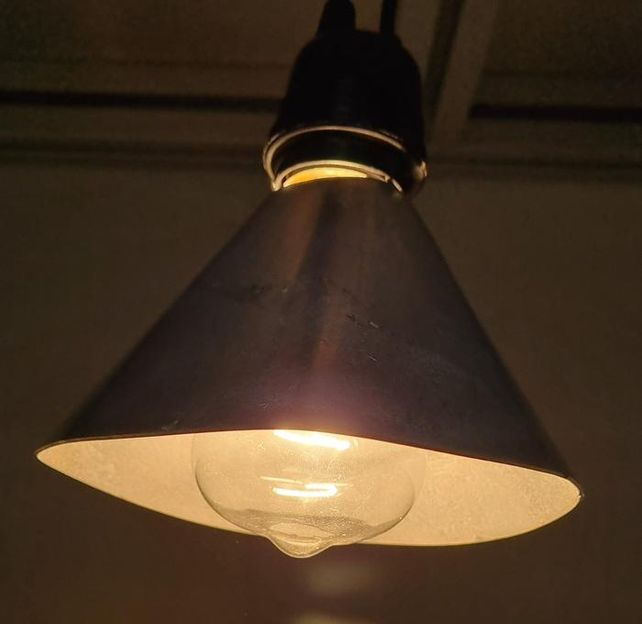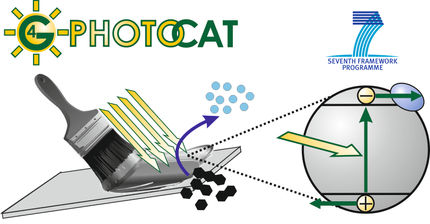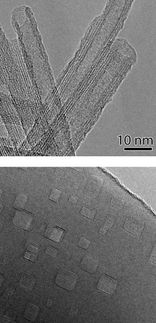Clever coating turns lampshades into indoor air purifiers
Advertisement
Indoor air pollution may have met its match. Today, scientists will report that they have designed catalyst-coated lampshades that transform indoor air pollutants into harmless compounds. The lampshades work with halogen and incandescent light bulbs, and the team is extending the technology so it will also be compatible with LEDs.

A lampshade coated with a catalyst uses heat from an incandescent bulb to destroy indoor air pollution.
Minhyung Lee
The researchers will present their results at the fall meeting of the American Chemical Society (ACS). ACS Fall 2023 is a hybrid meeting being held virtually and in-person Aug. 13–17, and features about 12,000 presentations on a wide range of science topics.
The lampshades target volatile organic compounds (VOCs), which account for most indoor airborne pollutants, according to Hyoung-il Kim, Ph.D., the project’s principal investigator. These compounds include acetaldehyde and formaldehyde and are released by paints, cleaners, air fresheners, plastics, furniture, cooking and other sources.
“Although the concentration of VOCs in a home or office is low, people spend more than 90% of their time indoors, so the exposure adds up over time,” Kim says.
“Conventional methods to remove VOCs from indoor air rely on activated carbon or other types of filters, which have to be replaced periodically,” says Minhyung Lee, a graduate student in Kim’s lab at Yonsei University. Lee will present the team’s work at the ACS meeting. Other devices have been developed that break down VOCs with the help of thermocatalysts activated by high temperatures or with photocatalysts, which respond to light. But Kim notes that most of these units need a separate heater or an ultraviolet (UV) light source, which can produce unwanted byproducts. His team wanted to take a simpler approach that would only require a visible light source that also produces heat — such as a halogen or incandescent bulb — and a lampshade coated with a thermocatalyst.
Halogen bulbs convert a mere 10% of the power they use into light, with the other 90% being transformed into heat, according to Lee. Incandescent bulbs are even worse, emitting 5% light and 95% heat. “That heat is typically wasted,” Kim says, “but we decided to use it to activate a thermocatalyst to decompose VOCs.”
In a paper published last fall, the team reported that they had synthesized thermocatalysts made of titanium dioxide and a small amount of platinum. The researchers coated the inside of an aluminum lampshade with the catalyst and placed the shade over a 100-watt halogen bulb in a test chamber containing air and acetaldehyde gas. Turning the lamp on heated the shade to temperatures up to about 250 degrees Fahrenheit — warm enough to activate the catalysts and decompose acetaldehyde. During this oxidation process, the VOC was initially converted into acetic acid, then into formic acid, and finally into carbon dioxide and water. Both of the acids are mild, and the amount of carbon dioxide released is harmless, Kim notes. The researchers also found that formaldehyde can be decomposed under the same conditions and that the technique works with incandescent bulbs.
“This was the first demonstration to utilize waste heat from lamp sources,” Kim says. Most previous research projects, and even a couple of lamps on the market, have instead relied on light-activated photocatalysts to destroy indoor air pollution.
In its latest work, Kim’s group is turning to less expensive substitutes for platinum. The team has already shown that these new iron- or copper-based catalysts can break down VOCs. In addition, copper is a disinfectant, so Kim anticipates that the copper catalyst could kill airborne microorganisms.
The scientists are now looking for ways to extend the pollution-destroying-lampshade concept to LEDs, a fast-growing segment of the lighting market. Unlike halogen and incandescent bulbs, however, LEDs release too little heat to activate thermocatalysts. So Kim’s team is developing photocatalysts that are stimulated by the near-UV light emitted by LEDs, as well as other catalysts that transform part of the LEDs’ visible light output into heat. “Our ultimate goal is to develop a hybrid catalyst that can utilize the full spectrum produced by light sources, including UV and visible light, as well as waste heat,” Kim says.






























































